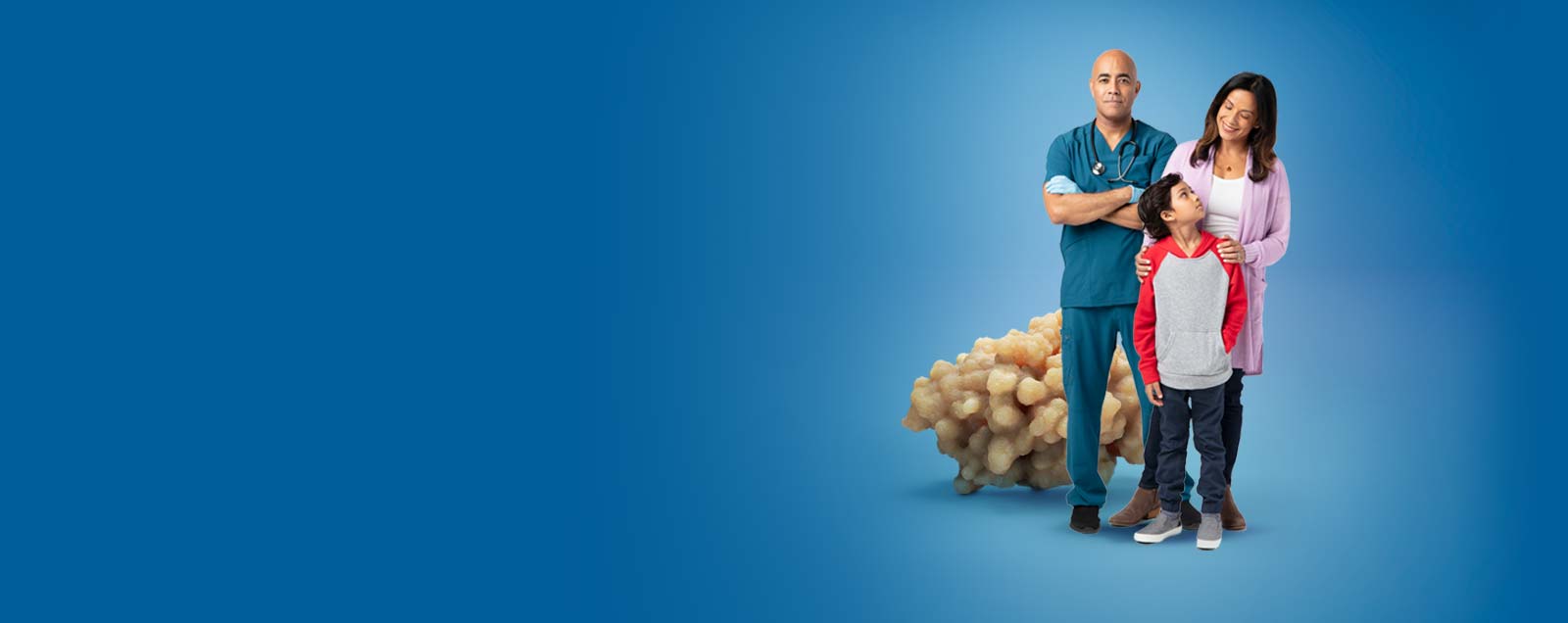

TESTING FOR PRIMARY HYPEROXALURIA TYPE 1 (PH1)
Diagnosing and managing PH1 as early as possible is critical.1-5 Oxalate level evaluation and genetic testing are current approaches used to help inform a PH1 diagnosis.1,2
GIVEN THE PROGRESSIVE, UNPREDICTABLE NATURE OF PH1, EARLY DIAGNOSIS IS CRITICAL5,6
If PH1 is suspected, some common methods seen in clinical practice to help test for the disease are listed below.
This testing information is provided for educational purposes only and is not intended to replace the independent medical judgment of any healthcare professional.

MEASURING OXALATE LEVELS
In patients with preserved kidney function:
24-HOUR URINE TEST*1,2,7,8
- Normal UOx level (all ages):
<45 mg (<0.50 mmol) /1.73 m2/24 hours9 - Spot testing can be used when 24-hour urine test is not possible6
In PH1, UOx levels are often >2 times higher than the upper limit normal.10
In patients with impaired kidney function:
PLASMA OXALATE MEASUREMENT2,3,6,8
- Normal plasma oxalate level:
≤2.0 μmol/L†11
Substantially elevated levels are typical when eGFR <30 mL/min/1.73 m2.5 Levels >20 μmol/L are suggestive of PH1.12,13
In patients with elevated UOx or plasma oxalate levels:
GENETIC TESTING
Identifying AGXT gene mutations with genetic testing can help confirm a PH1 diagnosis with high sensitivity and specificity.2,8,14
It is recommended to screen family members of a patient with PH1, especially siblings.2,6
The AUA recommends considering genetic testing to help confirm a PH1 diagnosis in any patient with urinary oxalate (UOx) excretion exceeding 75 mg/day (0.83 mmol/1.73 m2/day).‡7
*Values of UOx are laboratory- and method‑dependent.
†Reference values have not been established for patients younger than 18 years of age or older than 87 years of age.11
‡In adults without bowel dysfunction.7
Consider genetic testing2,5

One option for genetic testing when you suspect PH1 is the Alnylam Act® Program: Third-party genetic screening and counseling for patients who may have PH1 at no charge to patients, physicians, and payers.
The Alnylam Act® program was created to provide access to genetic testing and counseling to patients as a way to help people make more informed decisions about their health.
- While Alnylam provides financial support for this program, tests and services are performed by independent third parties
- Healthcare professionals must confirm that patients meet certain criteria to use the program
- Alnylam receives de-identified patient data from this program, but at no time does Alnylam receive patient-identifiable information. Alnylam may use healthcare professional contact information for research purposes
- Both genetic testing and genetic counseling are available in the US and Canada.
- Healthcare professionals or patients who use this program have no obligation to recommend, purchase, order, prescribe, promote, administer, use, or support any Alnylam product.
- No patients, healthcare professionals, or payers, including government payers, are billed for this program
Order a Test
Download this brochure to learn more about Alnylam Act®



















